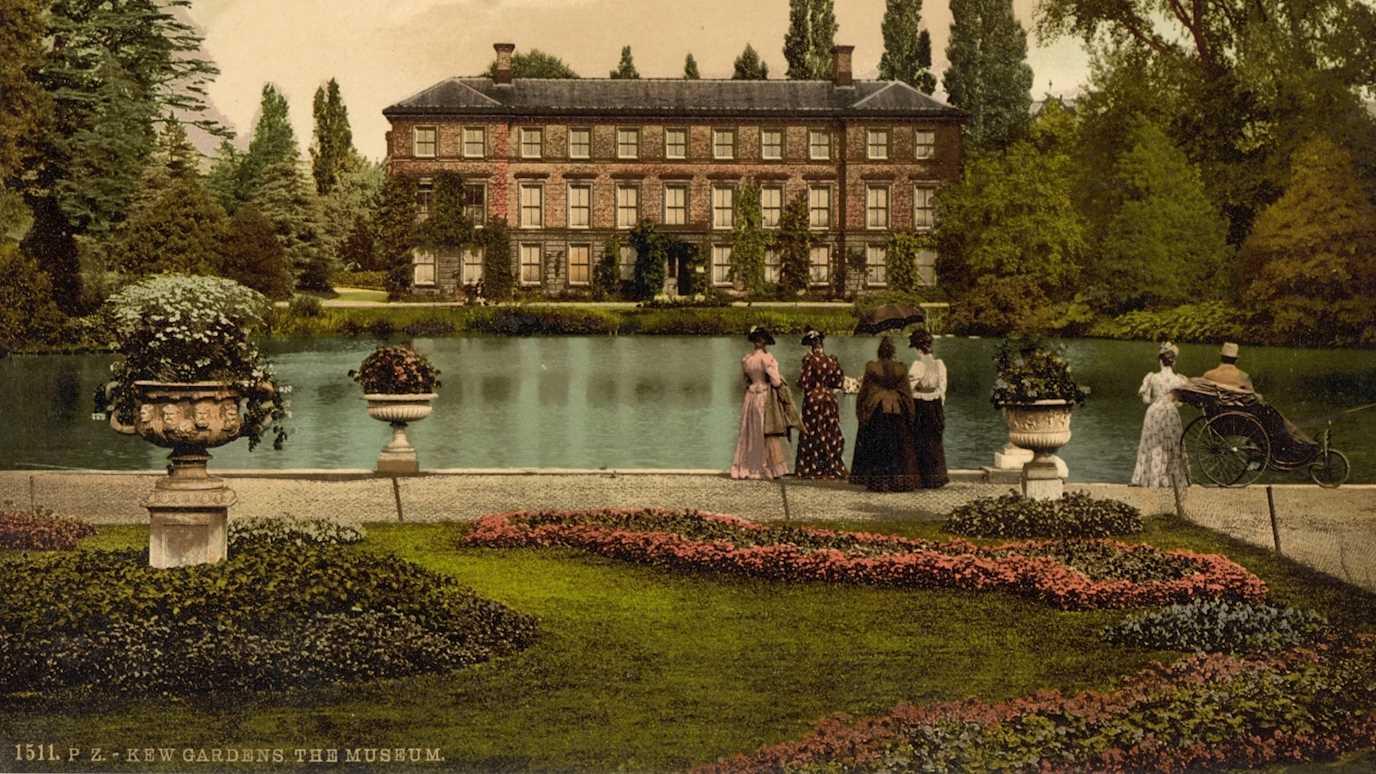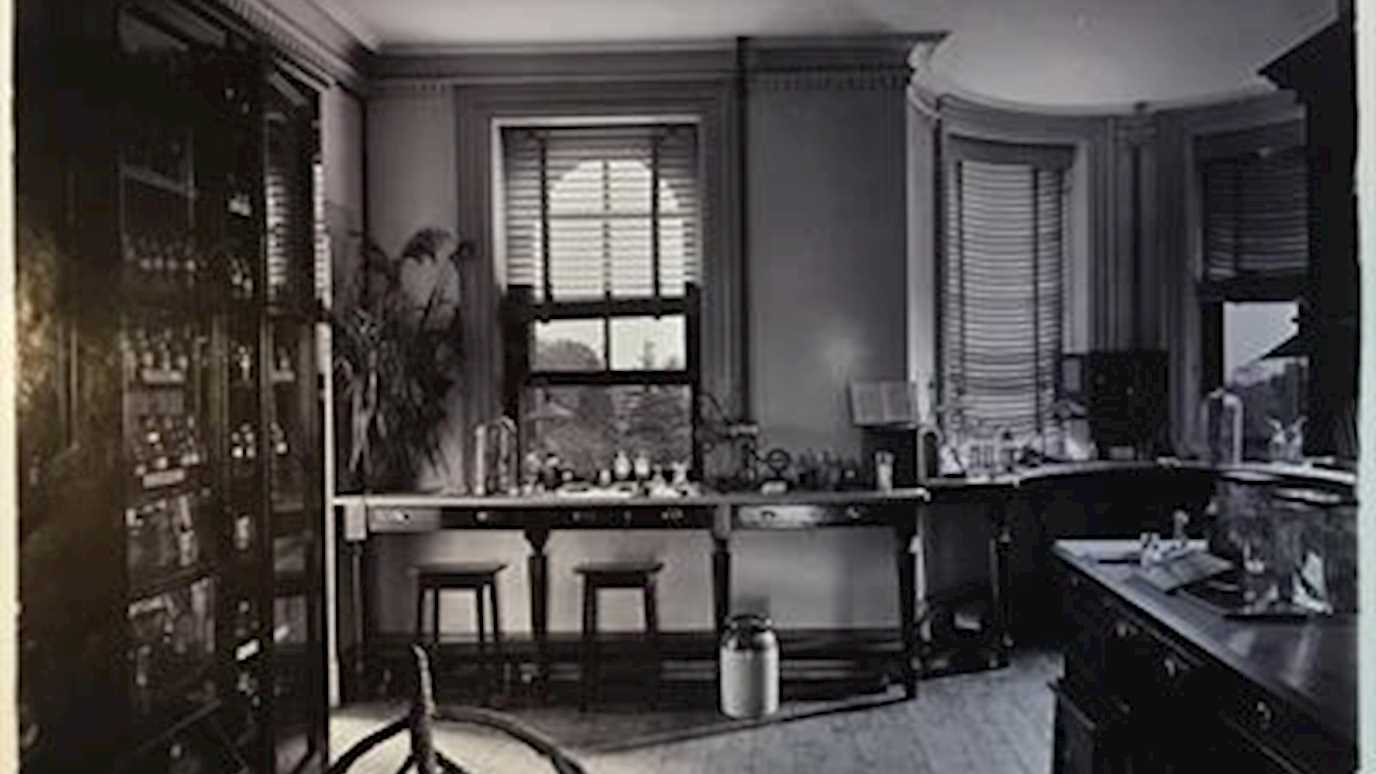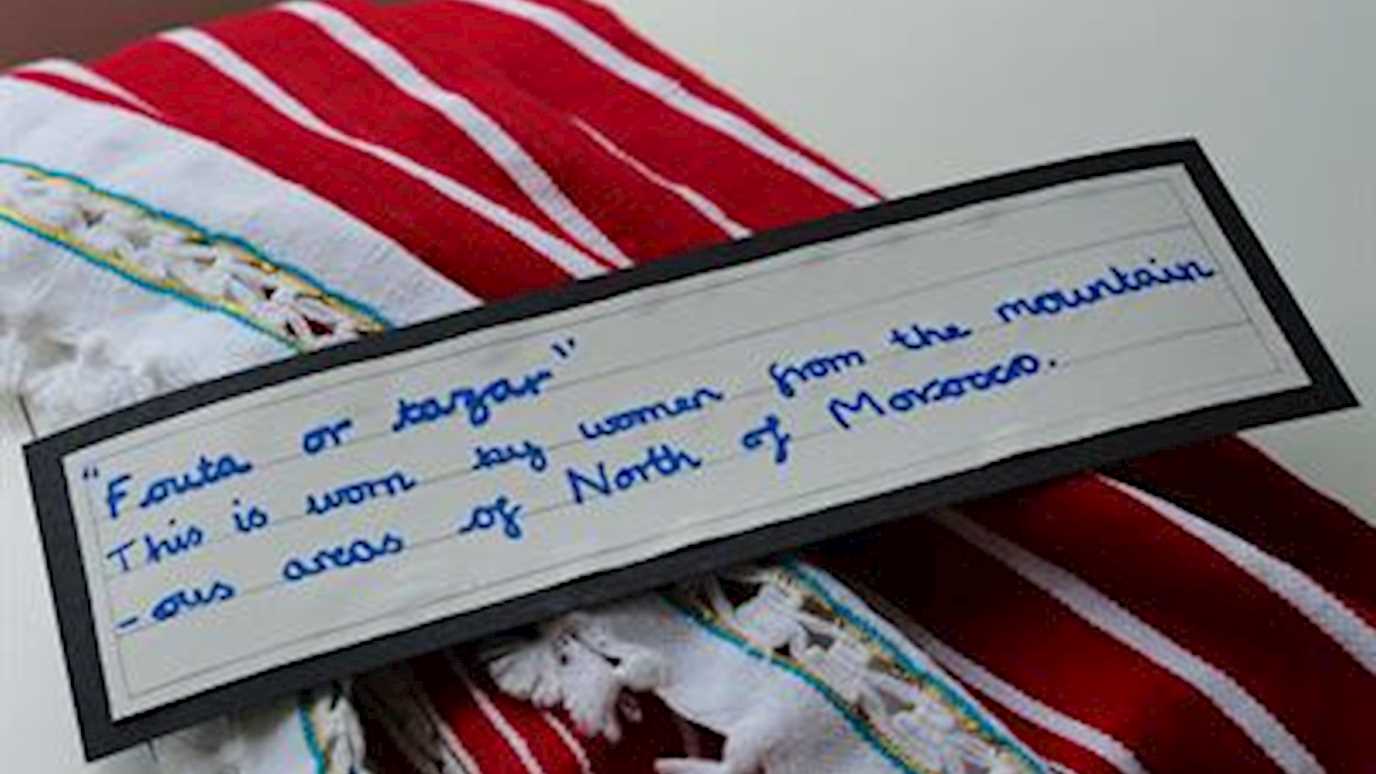By Caroline Cornish

For Kew’s contribution to Open House London this year, the Mobile Museum team reclaimed the building which once housed the world’s first Museum of Economic Botany. Now used as the School of Horticulture, this building began its life as King George III’s fruit store. In 1846 William Hooker commissioned architect Decimus Burton – designer of Kew’s Palm House and Temperate House – to convert this modest structure into a museum that would exhibit plants and their uses. The Museum of Economic Botany opened in September 1847; it eventually closed in 1960.
On Saturday 21 and Sunday 22 September, the building was opened to the public who were able to experience something of its former ambience as a museum, though without the vast majority of its contents (which have been in store for decades). Suspended from the balcony were replicas of the nineteenth-century botanical prints once displayed in the museum, by Arnold Dodel-Port and Leopold Kny, and on open tables in the centre of the space were selected objects from Kew’s Economic Botany Collection. Researchers and volunteers were on hand to interpret them and engage with visitors, who numbered around a thousand people.
The themes covered in the Open House displays included: cinchona and the quest for quinine; the history of paper-making; basketry; the Amazonian collections of botanist Richard Spruce; and the history of the school museum. Meanwhile outside the building visitors could see demonstrations of the crafts of paper-making and basket-making, showing that the use of plants as raw materials is as relevant today as it was in the 19th century.
The research which informed these displays was undertaken within the Mobile Museum project and other research projects at Kew, Royal Holloway and Birkbeck, University of London. Together they gave some idea of the breadth of current research on the Economic Botany Collection and the potential for future research.























